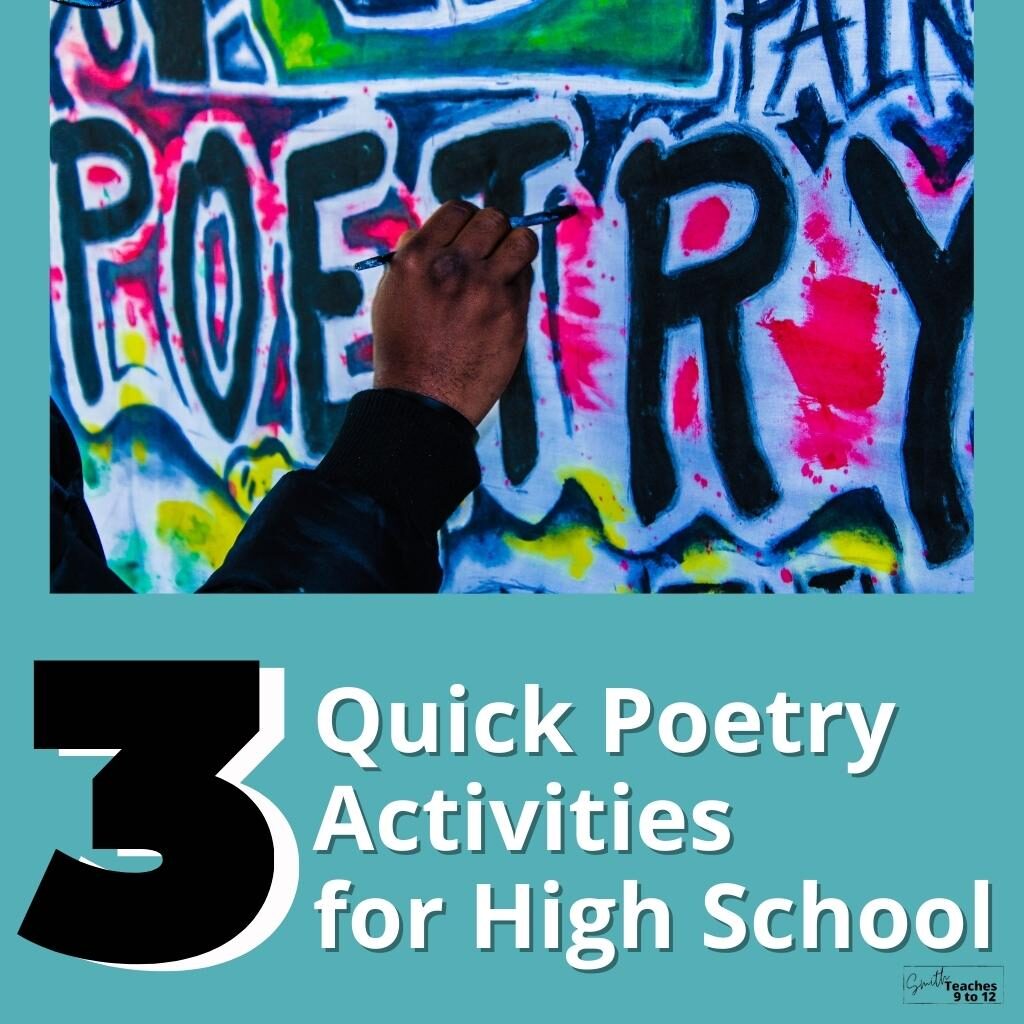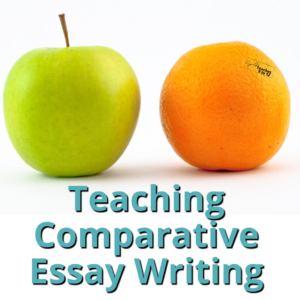Sharing is caring!
Incorporating poetry is always a good idea! But it doesn’t always have to be a rigorous analysis of a poem; instead, include some quick poetry activities that look to other aspects of poets or playing with language in general. Here are three ideas that fit the bill. They’re perfect for a quick exploration of language or to share new works or new poets with students.
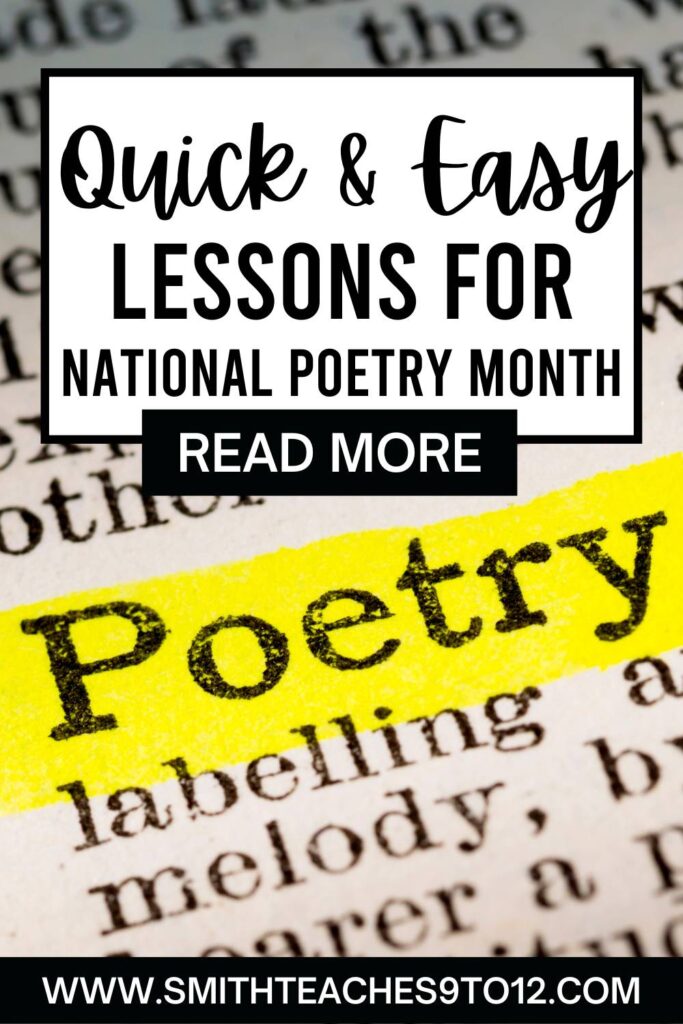
Quick Poetry Activity 1: EXPLORE THE POET

Create a list of poets and have students complete a webquest. Using the 5Ws is an easy way to make this happen. Turn it into a one-pager with the poet’s photo in the middle. Make sure to include an example of each poet’s work too. You can then create a Poet Profiles bulletin board to keep up all year. This is a great way to incorporate additional voices into your curriculum if you’re tied to particular texts.
Check out this list of 30 Poets You Should Be Reading from LitHub – a great start for some lesser known poets.
Activity 2: ‘PAINT’ THE POEM
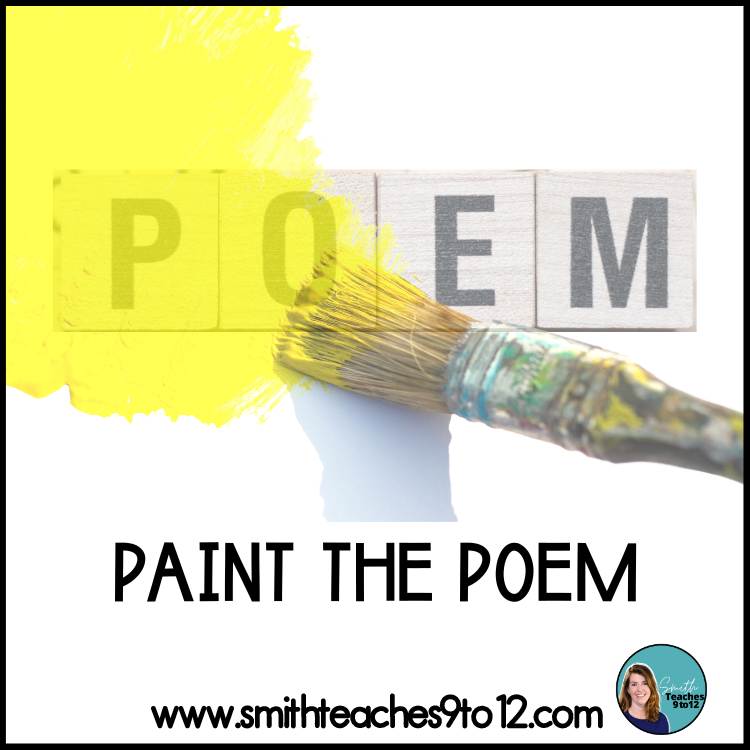
Create a visual of a poem. Provide a list of poems. It could even be those that were found by students in the explore the poet activity above. Students then draw or create a visual collage by hand or digitally (Canva for Education is a great option for this). The driving question is “What do you see when you read the poem?”. The completed pieces also make for a great classroom display.
Activity 3: MASH-UPS
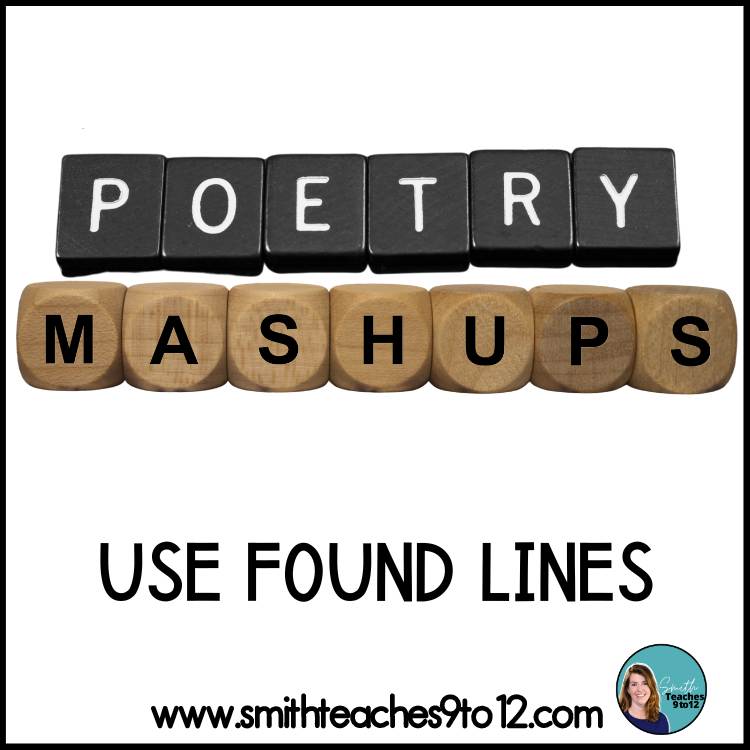
In small groups, students share poems. A maximum of 5 is usually ideal. These poems could be by the same poet (again a chance to use the poems from the previous activities) or based on theme. If based on a theme consider what you’re studying in class and work from there for selected poems. For example, if you’re doing coming of age novels then this list of poems for different life stages could work.
As they read they pick out lines; again, this could be based on a theme or just random lines that strike them as interesting. By compiling lines from a variety of poems, they create a new poem – a mash-up. This is a low-key way to explore and to write poetry.
If you want to add another step, then have students intersperse their found lines with ones they write themselves. Students can mimic style or write what they think the next line would be to fit with the theme or topic of their mash-up. A bit of higher stakes but still with a safety next for writing poetry. This also gives students a chance to spend time analyzing informally.
For more activity ideas, check out these poetry-related posts:
Poetry Creation and Risk Taking in ELA
3 Ideas for Poetry Creation in Everyday ELA Lessons


